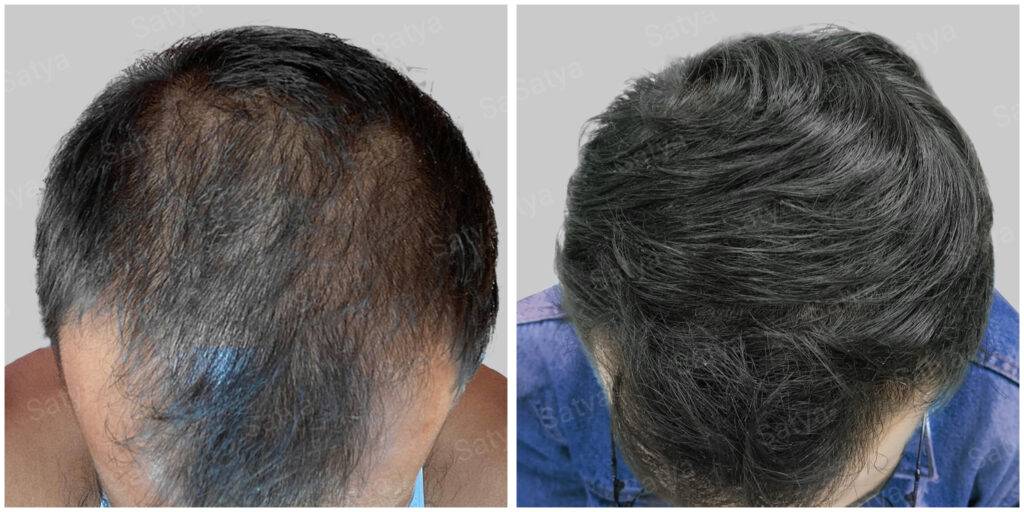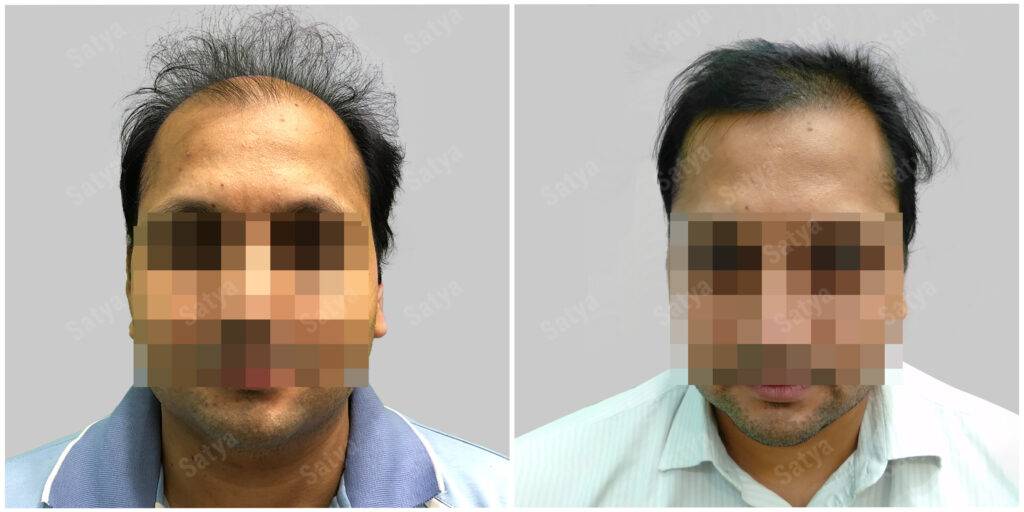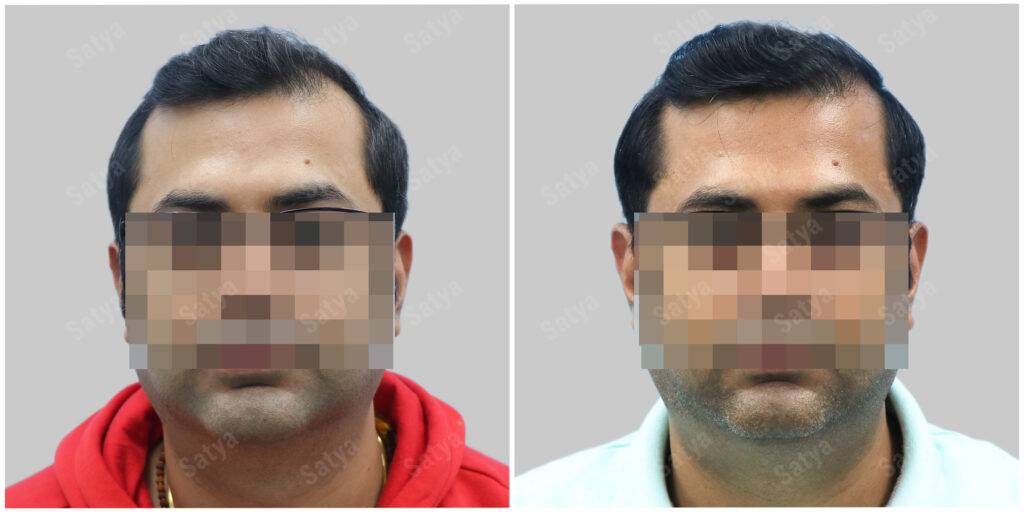Male pattern baldness, also known as androgenetic alopecia, plagues over 50% of the male population. The telltale signs include receding hairlines and hair thinning, shaping an unmistakable ‘M’ pattern on the scalp. Rooted in genetics and male sex hormones, this multifaceted issue warrants attention.
The journey of male pattern baldness often commences with a receding hairline and gradual thinning, forming an ‘M’ shape. Alternatively, it may manifest as diffuse thinning across the scalp. Diagnosis hinges on recognizing these distinctive patterns.
Numerous solutions, both medical and cosmetic, vie for attention in the realm of male pattern baldness. One such contender is Finasteride, a trusted, FDA-approved oral medication renowned for its efficacy in combating androgenetic alopecia.

What is Finasteride?
At its core, Finasteride represents the brand name of the generic drug Finasteride—an ally against male pattern baldness. This Type II alpha reductase inhibitor operates on a precise mission: it curbs the conversion of testosterone into dihydrotestosterone (DHT). By obstructing DHT hormone production in the scalp, Finasteride averts hair thinning and loss, acting as a guardian for your precious locks.
However, a crucial note: Finasteride isn’t a blanket solution. It zeroes in on specific patterns of hair loss, necessitating a consistent regimen for optimal results. It’s a journey that demands patience, as observable transformations may take up to four months. Furthermore, the key to maintaining the regrowth achieved rests in unwavering commitment to continued usage.
Benefits of Finasteride
- It is efficient in controlling hair loss. People have been using this medication to slow down their hair loss and improve thickness of the thinning hair.
- It has also helped to rejuvenate dormant follicles resulting in more hair growth on patients’ heads.
- Works well for slowing down progression of male pattern baldness.
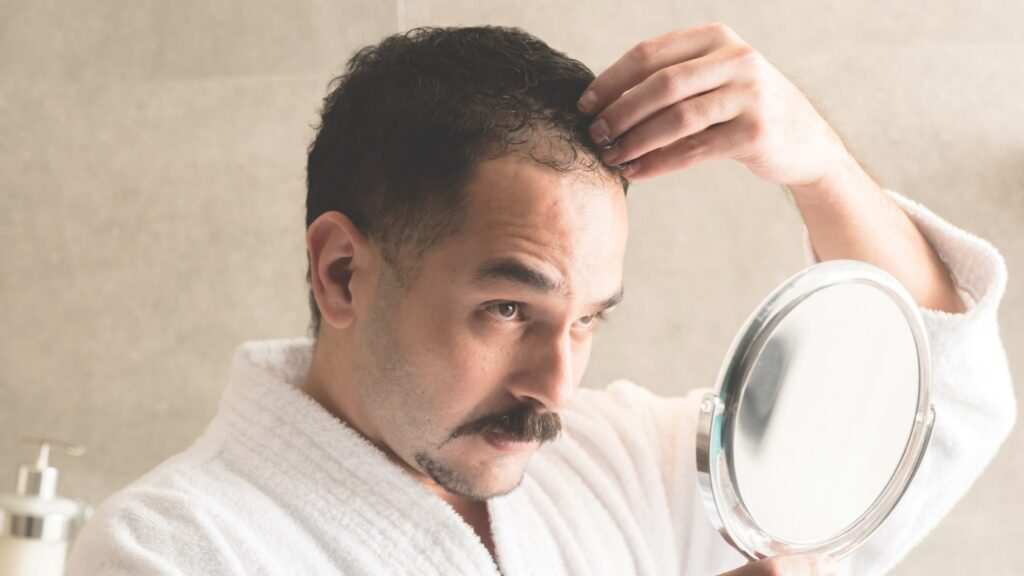
How does Finasteride work?
Central to male biology is testosterone, the primary hormone. A fraction of this testosterone—about 10%—transforms into the notorious dihydrotestosterone (DHT), a major antagonist in male pattern baldness. Finasteride, by stemming the activity of the enzyme 5-alpha reductase, obstructs the conversion of testosterone into DHT. In doing so, it tackles the heart of hair loss.
Who is the ideal candidate for Finasteride?
Finasteride is designed exclusively for males grappling with hair loss. At Satya Hair Solutions, our skilled dermatologists evaluate each patient’s unique situation before prescribing this medication. Often, Finasteride is introduced alongside other cosmetic or medical hair treatment for a synergistic effect.
Can Finasteride be used in females?
Side effects of Finasteride:
Finasteride is one of the most effective drugs in treating baldness, but it has some side effects that one can experience after regular administration of this drug. These side effects include:
- Mood swings
- Diminished interest in sex
- Reduced libido
- Orgasm difficulties
- Depression and anxiety
- Erectile dysfunction
- Headaches and dizziness
- Swelling in extremities
- Tenderness or enlargement of male breasts (gynecomastia)
- Risk of male breast cancer
While most sexual side effects are reversible and typically dissipate upon discontinuation, some individuals might experience long-term effects known as post-finasteride syndrome. Comprehensive research is ongoing to delineate the full spectrum of Finasteride side effects.
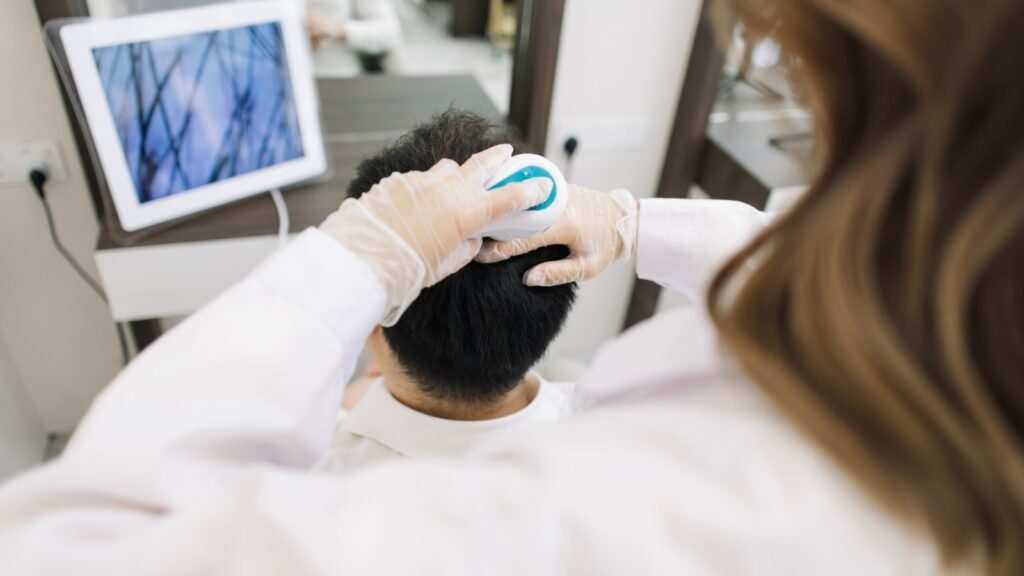
Concept of Microdosing of Finasteride
Let’s delve into Finasteride’s world—a remedy with promise, but not a magical solution. It’s like a brake slowing hair loss, but don’t expect it to magically regrow lost strands. Some research hints at your body getting used to it over time, possibly reducing its effects.
Enter "Microdosing": A New Angle
Imagine a fresh approach: microdosing. It means taking a smaller than usual dose. Here’s the twist: this scaled-down dose might just safeguard your current hair, keeping thinning at bay and postponing your body’s potential tolerance to Finasteride.
It’s a “less is more” outlook, aligning with Satya Hair Solutions approach. They’re all about a well-rounded solution that uses resources wisely.
So, what’s the Take Away?
In the pool of hair loss solutions, Finasteride shines as a lead character—strong, but not all-mighty. It can’t fully stop hair loss forever or regrow what’s gone. Plus, prolonged use could lead to your body getting too used to it. But here’s the take away: with guidance from medical specialist and a blend of Satya Hair Solutions expertise and Finasteride potential, the results sound promising.
Book an appointment
Consultation

Repair

Blog

Galleries

Frequently Asked Questions
Finasteride is the generic drug name, while Propecia is the brand name for the same medication. Both are used to combat male pattern baldness. Finasteride operates by inhibiting the conversion of testosterone into dihydrotestosterone (DHT), which is a hormone associated with hair loss.
Finasteride is efficient in controlling hair loss and improving the thickness of thinning hair. It has also been known to rejuvenate dormant hair follicles, resulting in more hair growth on the scalp. Additionally, it works well for slowing down the progression of male pattern baldness.
Finasteride, like Propecia, works by inhibiting the enzyme 5-alpha reductase, which is responsible for converting testosterone into DHT. By reducing DHT levels in the scalp, it helps prevent hair thinning and loss.
Finasteride is designed exclusively for males dealing with hair loss, particularly male pattern baldness. Dermatologists typically evaluate each patient's unique situation before prescribing this medication, sometimes introducing it alongside other treatments for a synergistic effect.
Finasteride is not FDA approved for use in female pattern hair loss. However, it is used off-label in some selective cases, particularly in postmenopausal women. Pregnant or lactating females, or those in childbearing capacity, should avoid this drug due to potential fetal birth irregularities.
Finasteride, like Propecia, can have side effects, including mood swings, reduced libido, sexual difficulties, depression, anxiety, erectile dysfunction, headaches, dizziness, swelling in extremities, tenderness or enlargement of male breasts (gynecomastia), and a potential risk of male breast cancer. While most sexual side effects are reversible upon discontinuation, some individuals might experience long-term effects known as post-finasteride syndrome.
Microdosing Finasteride involves taking a smaller than usual dose of the medication. This approach aims to safeguard existing hair and delay the body's potential tolerance to Finasteride, keeping thinning at bay. It's a "less is more" strategy that aligns with preserving the effects of the medication over time.
Finasteride, like Propecia, is not a guaranteed solution for hair regrowth. Its primary focus is on slowing down hair loss and improving hair thickness. It may not fully regrow lost hair, and prolonged use may lead to reduced effectiveness.
Individuals considering Finasteride should seek guidance from a medical specialist and be aware of potential side effects. Combining expert advice with the medication's potential benefits can lead to promising results in the fight against hair loss.

